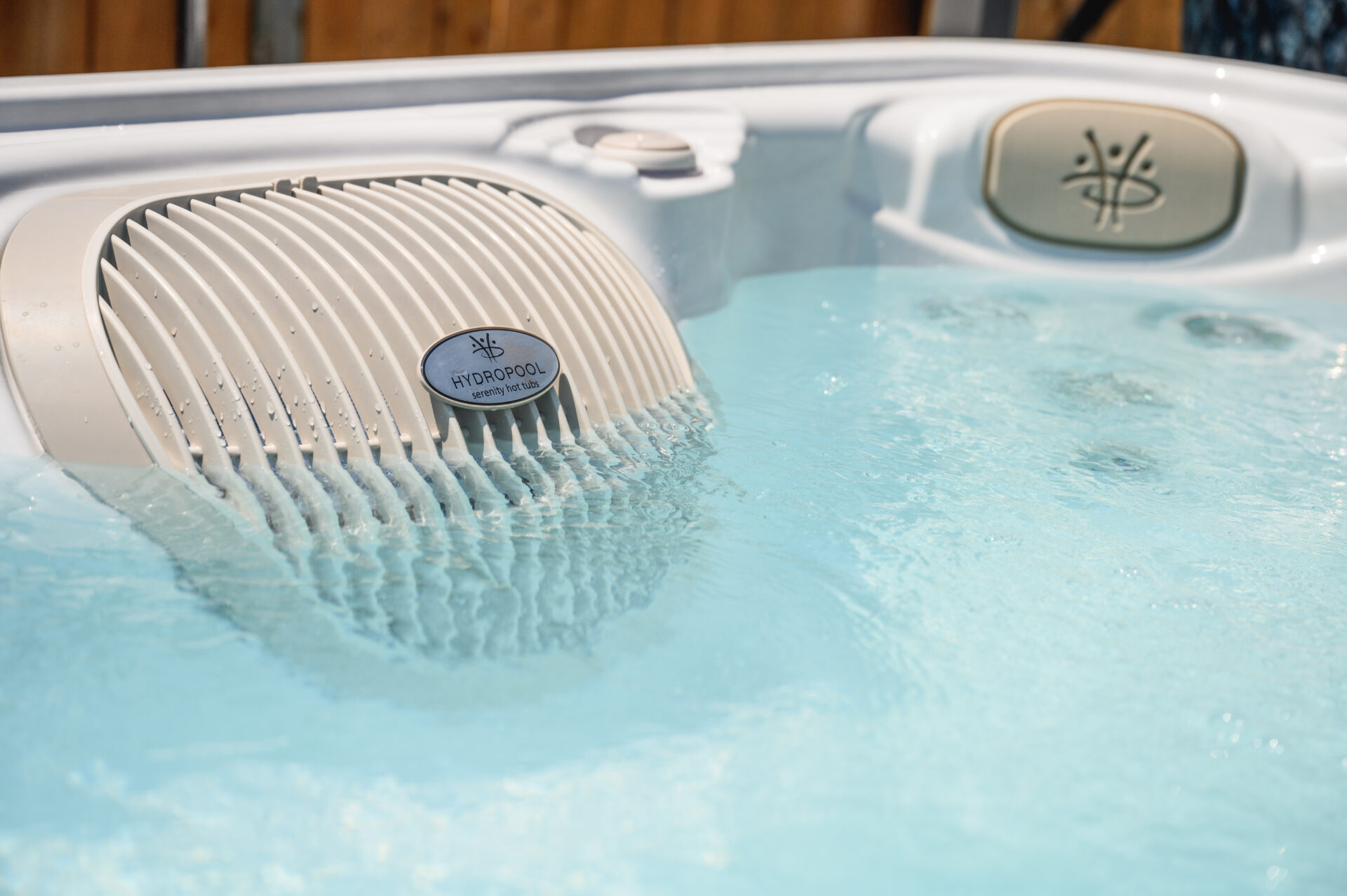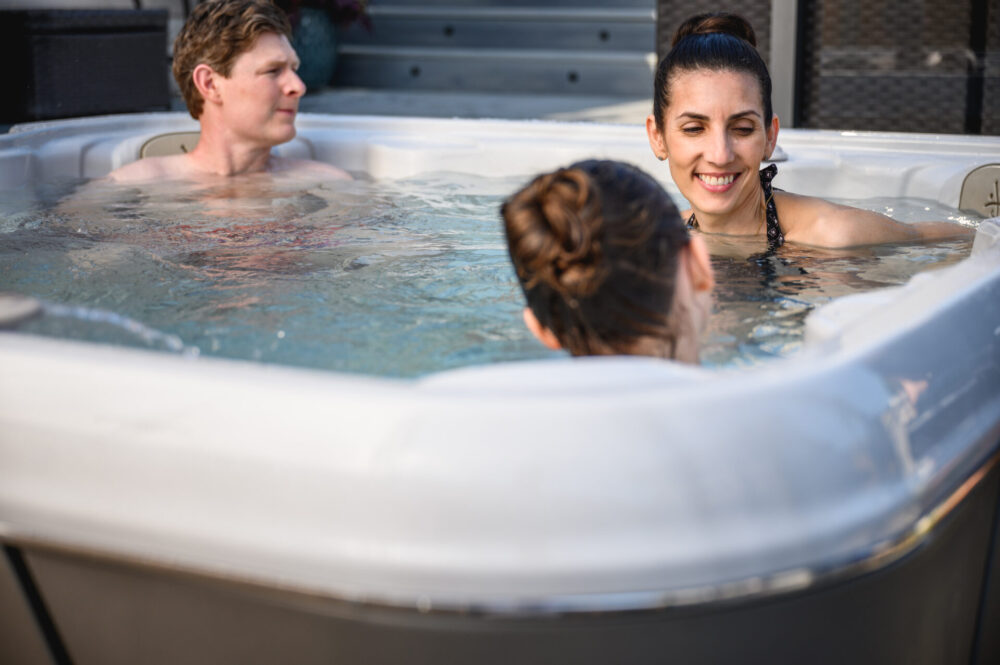Up to $9,000 Off Sundance® Spas
Limited inventory, payments under $100/month
Shop Now

Contents
New England’s distinct seasonal challenges create unique considerations for hot tub owners. From freezing winters to humid summers, maintaining your spa requires specific knowledge—but perhaps less work than you might think. At Great Bay Spa & Sauna, we frequently hear concerns from prospective buyers about maintenance requirements that simply aren’t accurate. Let’s separate fact from fiction to help you enjoy your hot tub with confidence throughout all of New England’s seasons.
The Truth: While regular maintenance is important, today’s hot tubs are designed for efficiency and convenience. With proper chemical balancing and basic care, your maintenance routine is likely simpler than you expect.
Quality Sundance® Spas like the 880™ Series feature advanced filtration systems such as the MicroClean® Ultra Filtration System, which dramatically reduces cleaning requirements. These systems continuously filter water even when the spa isn’t in active use, capturing contaminants before they become problematic.
The Reality:
For New England owners specifically, extending water life during winter months makes sense—drain and refill operations are easier during milder weather in spring and fall. With proper care, many of our customers successfully maintain their water for 4-6 months between changes.
The Truth: Never add antifreeze to your hot tub water. Antifreeze contains chemicals that are harmful to human skin and can cause severe irritation or rashes. Additionally, it can damage your spa’s components and void your warranty.
The Reality:
If you plan to drain your hot tub for an extended period during winter, professional winterization may involve adding non-toxic antifreeze to plumbing lines after draining—but never to the water you soak in. Our service team can properly winterize your spa if necessary, but most New England owners find winter to be their favorite season for hot tub use.
The Truth: Modern hot tubs are designed for continuous operation. Turning your spa off between uses actually increases energy consumption and can lead to system complications, especially in New England’s variable climate.
The Reality:
Instead of powering down, use your hot tub’s energy-saving modes when you’ll be away for extended periods. The SmartTub® System available with the 980™ Series allows you to remotely adjust settings, ensuring efficient operation whether you’re home or away.

The Truth: A properly maintained hot tub is exceptionally clean and safe. Modern sanitization systems, combined with basic testing and chemical balancing, ensure your water remains crystal clear and hygienic.
The Reality:
The myth likely stems from poorly maintained public facilities or outdated equipment. Today’s private hot tubs, when given minimal proper care, maintain excellent water quality with minimal chemical addition.
The Truth: While high temperatures do affect sanitizer levels, this challenge has been addressed through advanced water care systems and alternative sanitizers.
The Reality:
Many New England owners find that bromine-based systems provide more consistent protection with less maintenance, especially during summer months when higher temperatures and increased usage may accelerate chlorine depletion.
The Truth: In New England, winter is often prime hot tub season! There’s no need to drain your spa before cold weather arrives—in fact, doing so can potentially damage your system if not properly winterized afterward.
The Reality:
Rather than draining before winter, focus on maintaining proper chemical balance and ensuring your cover is in good condition to maximize energy efficiency during colder months.
The Truth: Chlorine doesn’t turn hair green—copper does. This misconception likely comes from swimming pools, where copper-based algaecides or copper pipes may cause discoloration. In properly maintained hot tubs, this simply isn’t an issue.
The Reality:
If you’re concerned about hair or skin sensitivity, consider bromine, minerals, or salt systems as alternatives to traditional chlorine. Our staff can help you select the ideal water care approach for your specific needs.
The Truth: While heating costs do increase somewhat during winter months, the difference is less significant than most people assume. Modern hot tubs are designed with excellent insulation and energy-efficient heating systems.
The Reality:
A well-designed hot tub like those in the Sundance® 680™ Series typically adds approximately $20-40 to monthly electricity bills, even during New England’s coldest months. When compared to the wellness benefits and year-round enjoyment, most owners find this cost minimal.

The Truth: While water chemistry sounds complex, modern testing systems and clear guidelines make it accessible to anyone. You don’t need special knowledge—just consistent basic testing and adjustment.
The Reality:
Most of our customers master basic water testing and chemical adjustment within their first month of ownership. The process typically takes just a few minutes each week, with adjustments becoming intuitive with experience.
The Truth: Not all hot tub covers are created equal, especially for New England’s climate challenges. A quality, well-fitted cover is essential for energy efficiency, water cleanliness, and long-term enjoyment.
The Reality:
In New England specifically, cover quality directly impacts operating costs and maintenance requirements. Investing in a premium cover typically pays for itself through energy savings within 2-3 years, while also extending the life of your water care chemicals by preventing contamination.
The Truth: A properly maintained hot tub should have very little odor. Strong chlorine smell actually indicates a problem—typically chloramines, which are formed when chlorine combines with contaminants.
The Reality:
If your hot tub develops a strong chlorine smell, it’s time for water maintenance—not an indication of proper chemical levels. Adding shock treatment will eliminate chloramines and restore proper sanitation without the unpleasant odor.
The Truth: Properly balanced hot tub water should not cause eye irritation. When eyes burn or become red, it’s typically an indication of improper pH or alkalinity levels, not chlorine itself.
The Reality:
Regular testing and adjustment of pH and alkalinity—not just sanitizer levels—ensures your hot tub remains comfortable for everyone. Our team can help troubleshoot if you experience persistent comfort issues.
With today’s advanced spa designs and water care systems, maintaining your hot tub is simpler than ever. New England’s climate presents unique considerations, but not significant complications. By understanding these common myths and the actual requirements, you can enjoy your hot tub year-round with minimal effort.
At Great Bay Spa & Sauna, we provide comprehensive orientation for new owners, free water testing, and ongoing support to ensure your hot tub ownership remains a pleasure, not a chore. Our selection of Sundance® Spas features the latest innovations in water care, energy efficiency, and ease of maintenance, making ownership even simpler.
Visit our Portsmouth showroom to learn more about how today’s hot tubs have revolutionized the maintenance experience, making ownership accessible and enjoyable for everyone—regardless of your technical knowledge or busy schedule.